DF-models df-models 3640 AVANTI-BR V2 Brushed Boat Mode d'emploi
- Catégorie
- Jouets télécommandés
- Taper
- Mode d'emploi

NICHT für Salzwasser geeignet!
NOT suitable for salt water!
RC-Boot RTR
2,4 GHz Fernsteuerung
7,4 Volt (2S) LiIon Akku
1500mAh
USB Ladekabel
Bootsständer
Anleitung
Bateau RC RTR
Radiocommande 2,4 GHz
7,4 Volt (2S) batterie LiIon
1500mAh
USB Câble de charge
Support de bateau
Instructions
Barco RC RTR
Mando a distancia de 2,4 GHz
Batería de LiIon de 7,4 voltios (2S) - 1500mAh
USB Cable de carga
Soporte para barcos
Manual de instrucciones
RC boat RTR
2.4 GHz remote control
7,4 Volt (2S) LiIon battery
1500mAh
USB charging cable
boat stand
Manual
Lieferumfang | scope of delivery | Contenu de la livraison | Ambito di consegna | Alcance de la entrega









Ersatzteile | spare parts | Pièces de rechange
Parti di ricambio | Piezas de recambio
1) Lenkrad
2) Gashebel
3) Ein-/Ausschalter
4) Speed & Demo
5) Trimmung links
6) Kontrolleuchte
7) Trimmung rechts
8) Flip
1) Steering wheel
2) Throttle lever
3) On/Off switch
4) Speed & Demo
5) Trim left
6) Control light
7) Trim right
8) Flip
1) Volant de direction
2) Levier d'accélération
3) Bouton marche/arrêt
4) Vitesse & Démo
5) Trim gauche
6) Lampe de contrôle
7) Trim à droite
8) Flip
1) Volante
2) Acceleratore
3) Interruttore On/Off
4) Velocità e demo
5) Rivestimento sinistro
6) Luce di controllo
7) Rifinitura a destra
8) Capovolgere
1) Volante
2) Acelerador
3) Interruptor de encendido/apagado
4) Velocidad y demostración
5) Embellecedor izquierdo
6) Luz de control
7) Recorte a la derecha
8) Voltear
Nr.: 6981 - Akku 7,4 Volt 1500mAh
Nr.: 7465 - USB Ladekabel
Nr.: 3641 - Schiffsschraube
Nr.: 3642 - Stevenrohr mit Welle
Nr.: 3643 - Motor
Nr.: 3644 - Servo
Nr.: 3645 - Fernsteuerung
No.: 6981 - Battery 7,4 Volt 1500mAh
No.: 7465 - USB charging cable
No.: 3641 - propeller
No.: 3642 - stern tube with shaft
No.: 3643 - Motor
No.: 3644 - Servo
No.: 3645 - remote control
No. :6981 - Batterie 7,4 Volt 1500mAh
No. :7465 - Câble de chargement USB
No : 3641 - Hélice de bateau
No. : 3642 - Tube d'étambot avec arbre
No. : 3643 - Moteur
No. : 3644 - Servo
No. : 3645 - Télécommande
N.: 6981 - Batteria 7,4 Volt 1500mAh
N.: 7465 - Cavo di ricarica USB
N.: 3641 - elica
N.: 3642 - tubo di poppa con albero
N.: 3643 - Motore
N.: 3644 - Servo
N.: 3645 - Telecomando
Nº: 6981 - Batería 7,4 Volt 1500mAh
Nº: 7465 - Cable de carga USB
Nº: 3641 - hélice
Nº: 3642 - tubo de popa con eje
Nº: 3643 - Motor
Nº: 3644 - Servo
Nº: 3645 - Mando a distancia

4) Speed & Demo:
Standardeinstellung des Modells ist High Speed, durch kurzes Drücken der Taste
können Sie das Modell auf Low Speed (langsam) schalten (für Fahranfänger).
Low Speed -> ein Beep Ton | High Speed -> zwei Beep Töne
Drücken und halten Sie die Taste schaltet sich ein Demo Modus des Modells ein.
Das Modell beginnt nun selbständig eine „8“ zu fahren (2 Runden). Wird der
Gashebel oder das Lenkrad bewegt wird der Demo-Modus unterbrochen.
Bitte achten Sie auf ausreichend Platz.
4) Speed & Demo:
Default setting of the model is High Speed, by pressing the button briefly you can switch the model to Low Speed (slow) (for
novice riders). Low Speed -> one beep sound | High Speed -> two beep sounds
Press and hold the button to switch on a demo mode of the model. The model will now start to drive an "8" independently (2
laps). If you move the throttle or the steering wheel the demo mode will be interrupted.
Please make sure that there is enough space.
4) Vitesse & Démo :
Le réglage par défaut du modèle est High Speed, en appuyant brièvement sur le bouton, tu peux faire passer le modèle en Low
Speed (lent) (pour les débutants en pilotage). Low Speed -> un bip | High Speed -> deux bips
En appuyant sur le bouton et en le maintenant enfoncé, un mode de démonstration du modèle s'enclenche. Le modèle
commence alors à effectuer un "8" de manière autonome (2 tours). Si la manette des gaz ou le volant est déplacé, le mode
démo est interrompu. Veillez à ce qu'il y ait suffisamment de place.
4) Velocità e demo:
L'impostazione predefinita del modello è Alta Velocità, premendo brevemente il pulsante si può passare a Bassa Velocità
(lenta) (per i piloti alle prime armi). Bassa velocità -> un segnale acustico | Alta velocità -> due segnali acustici
Tenere premuto il pulsante per attivare una modalità demo del modello. Il modello inizia ora a percorrere un "8" in modo
indipendente (2 giri). Se si sposta l'acceleratore o il volante, la modalità demo viene interrotta.
Assicuratevi che ci sia spazio sufficiente.
4) Velocidad y demostración:
El ajuste por defecto del modelo es de alta velocidad, pulsando brevemente el botón se puede cambiar el modelo a baja
velocidad (lento) (para los pilotos principiantes). Velocidad baja -> un pitido | Velocidad alta -> dos pitidos
Mantenga pulsado el botón para activar el modo de demostración del modelo. El modelo comienza ahora a conducir un "8" de
forma independiente (2 vueltas). Si se mueve el acelerador o el volante, se interrumpe el modo de demostración.
Por favor, asegúrese de que hay suficiente espacio.
5 & 7 Trimmung:
Sollte das Modell ohne die Lenkung zu betätigen nicht gerade aus fahren haben Sie die Möglichkeit mittels der Trimm-Knöpfe
den Geradeauslauf einzustellen.
5 & 7 Trim:
If the model does not straighten out without steering, you have the option to adjust the straight run using the trim knobs.
5 & 7 Trim :
Si le modèle ne se déplace pas en ligne droite sans actionner la direction, vous avez la possibilité de régler la trajectoire en ligne
droite à l'aide des boutons de trim.
5 e 7 Trim:
Se il modello non va dritto senza usare lo sterzo, è possibile regolare la corsa dritta usando i pulsanti del trim.
5 y 7 Trim:
Si el modelo no va en línea recta sin usar la dirección, tiene la opción de ajustar el recorrido en línea recta usando los botones
de ajuste.

Akku laden | charging the battery | Recharger la batterie
Caricare la batteria | Cargar la batería
Laden Sie den Akku IMMER ausserhalb des Modells, um eine Überhitzung während des Ladevorganges zu vermeiden,
verwenden Sie immer eine feuerfeste Unterlage!
Lösen Sie die Steckverbindung niemals durch ziehen an den Kabeln, immer am Stecker ziehen.
• Stecken Sie das Ladegerät (USB) an eine geeignete Stromversorgung
(USB-Netzteil, Handy-Adapter | nicht im Lieferumfang). Rote LED blinkt.
• Verbinden Sie nun den Akku mit dem USB-Ladekabel (weißer Stecker).
• Die LED leuchtet rot, der Akku wird geladen.
• Die LED ist bei angeschlossenem Akku erloschen, der Akku ist vollständig geladen.
• Trennen Sie den Akku vom USB-Ladekabel.
• Trennen Sie das USB-Ladekabel von der Stromversorgung.
• Maximale Ladezeit ca. 1-3 Stunden.
• Laden Sie NIE unbeaufsichtigt (z. B. „über Nacht“)!
• Laden Sie IMMER auf einer feuerfesten Unterlage!
• Sicherheitsbestimmungen beachten!
ALWAYS charge the battery outside the model, to avoid overheating during charging, always use a fireproof base!
Never disconnect the plug connection by pulling on the cables, always pull on the plug.
- Connect the charger (USB) to a suitable power supply
(USB power supply, mobile phone adapter | not included). Red LED flashes.
- Now connect the battery with the USB charging cable (white plug).
- The LED lights up red, the battery is charging.
- The LED goes out when the battery is connected, the battery is fully charged.
- Disconnect the battery from the USB charging cable.
- Disconnect the USB charging cable from the power supply.
- Maximum charging time approx. 1-3 hours.
- NEVER charge unattended (e.g. "overnight")!
- ALWAYS charge on a fireproof surface!
- Observe safety regulations!
8 Flip:
Sollte das Modell einmal verkehrt herum im Wasser liegen haben Sie die Möglichkeit das Modell mittels der Flip-Taste (8) wieder
aufzurichten. Drücken und halten Sie hierzu die Flip-Taste (8) gedrückt bis das Modell wieder richtig herum im Wasser liegt.
8 Flip:
If the model is lying upside down in the water, you have the option of flipping the model upright again using the Flip button (8).
To do this, press and hold the flip button (8) until the model is again upside down in the water.
8 Flip :
Si le modèle se trouve à l'envers dans l'eau, vous avez la possibilité de le redresser à l'aide de la touche Flip (8). Pour ce faire,
appuyez sur la touche Flip (8) et maintenez-la enfoncée jusqu'à ce que le modèle soit à nouveau à l'envers dans l'eau.
8 Flip:
Se il modello è capovolto nell'acqua, è possibile capovolgerlo nuovamente utilizzando il pulsante di ribaltamento (8). A tal fine,
tenere premuto il pulsante di ribaltamento (8) finché il modello non si trova nuovamente capovolto nell'acqua.
8 Volteretas:
Si el modelo está boca abajo en el agua, tiene la posibilidad de volver a ponerlo en posición vertical con el botón de giro (8).
Para ello, mantenga pulsado el botón de giro (8) hasta que el modelo vuelva a estar boca abajo en el agua.
Ladekabel / Kabel nie aufgewickelt lassen, dies kann zu Überhitzung führen!
Never leave the charging cable / cord coiled up, this can lead to overheating!
Ne jamais laisser le câble de chargement / le câble enroulé, cela peut entraîner une surchauffe !
Non lasciare mai il cavo di ricarica arrotolato, perché potrebbe surriscaldarsi!
No deje nunca el cable de carga enrollado, ya que puede provocar un sobrecalentamiento.


Startvorbereitungen | get started | Préparatifs de lancement
Preparativi per il lancio | Preparativos de lanzamiento
1 2
34
5
Um den Akku zu entnehmen/ einzusetzen Sie die Haube
abnehmen. Drehen Sie hierzu die hinteren Verriegelungen und
nehmen das Oberdeck ab. Drehen Sie nun die vier Veriegelun-
gen des Unterdecks auf und nehmen dieses ebenfalls ab.
Schalten Sie nun die Fernsteuerung ein.
Verbinden Sie den Akku mit dem Fahrtenregler (auf richtige
Poolung achten). Die Verbindung zwischen Sender und Modell
findet erst statt, sobald das Modell im Wasser ist (Schutzschal-
tung). Beim Ausschalten gehen Sie in umgekehrter Reihenfolge
vor. Sollte das Modell nicht betrieben werden, den Akku IMMER
abstecken und aus dem Modell entnehmen! Achten Sie darauf,
dass beide Decks sicher und vollständig verschlossen sind um
ein Eindringen von Wasser zu verhindern.
To remove/insert the battery, remove the hood. To do this, turn the rear latches and remove the upper deck. Now turn the four
latches of the lower deck and remove it as well. Now switch on the remote control.
Connect the battery to the speed controller (ensure correct pooling). The connection between transmitter and model only takes
place as soon as the model is in the water (protective circuit). When switching off, proceed in reverse order. If the model is not
operated, ALWAYS disconnect the battery and remove it from the model!
Pour retirer/installer la batterie, retirez le capot. Pour cela, tournez les verrous arrière et retirez le pont supérieur. Dévissez
ensuite les quatre verrous du pont inférieur et retirez-le également. Allumez maintenant la télécommande.
Connectez l'accu au régulateur de vitesse (veillez à ce qu'il soit correctement regroupé). La connexion entre l'émetteur et le
modèle n'a lieu que lorsque le modèle est dans l'eau (circuit de protection). Pour la mise hors tension, procédez dans l'ordre
inverse. Si le modèle n'est pas utilisé, débranchez TOUJOURS l'accu et retirez-le du modèle !
Per rimuovere/inserire la batteria, togliere il cofano. A questo scopo, girare le chiusure posteriori e rimuovere il piano superiore.
Ora girare le quattro chiusure del piano inferiore e rimuovere anche questo. Ora accendete il telecomando.
Collegare la batteria al regolatore di velocità (accertarsi che sia correttamente collegata). Il collegamento tra trasmettitore e
modello avviene solo quando il modello è in acqua (circuito di protezione). Quando si spegne, procedere in ordine inverso. Se il
modello non viene utilizzato, scollegare SEMPRE la batteria e rimuoverla dal modello!
Para extraer/insertar la batería, retire el capó. Para ello, gire los pestillos traseros y retire la cubierta superior. Ahora gire los
cuatro pestillos de la cubierta inferior y retírela también. Ahora enciende el mando a distancia.
Conecte la batería al regulador de velocidad (asegúrese de que está correctamente agrupada). La conexión entre el transmisor y
el modelo sólo se produce cuando el modelo está en el agua (circuito de protección). Al apagar, proceda en orden inverso. Si el
modelo no está en funcionamiento, ¡desconecte SIEMPRE la batería y retírela del modelo!
Put the boat into the water ,
the boat will be turn on automatically

Durch drehen am Lenkrad nach links lenkt das Modell nach links. Drehen Sie nach rechts, lenkt auch das Modell nach rechts.
Durch ziehen am Gasgriff in Richtung Haltegriff beschleunigt das Modell (fährt vorwärts). Durch drücken weg vom Haltegriff
fährt das Modell rückwärts. Die Geschwindigkeit ist stufenlos regelbar (je weiter Sie am Hebel ziehe oder drücken, desto
schneller oder langsamer fährt das Modell). Rückwärtsfahrten sollten nur in Notfällen stattfinden.
Turning the steering wheel to the left steers the model to the left. Turning to the right also steers the model to the right.
By pulling the throttle towards the handle, the model accelerates (moves forward). By pushing away from the handle, the model
moves backwards. The speed is infinitely variable (the further you pull or push the lever, the faster or slower the model moves).
Reverse travel should only take place in emergencies.
Si vous tournez le volant vers la gauche, le modèle se dirige vers la gauche. Si vous tournez vers la droite, le modèle se dirige
également vers la droite. En tirant la poignée des gaz vers la poignée de maintien, le modèle accélère (avance). Si l'on s'éloigne
de la poignée, le modèle recule. La vitesse est réglable en continu (plus vous tirez ou poussez la manette, plus le modèle se
déplace rapidement ou lentement). La marche arrière ne doit être utilisée qu'en cas d'urgence.
Ruotando il volante a sinistra, il modello viene spostato a sinistra. Ruotando verso destra, anche il modello viene orientato
verso destra. Tirando l'acceleratore verso la maniglia, il modello accelera (avanza). Allontanando la maniglia, il modello si sposta
all'indietro. La velocità è infinitamente variabile (più si tira o si spinge la leva, più il modello si muove velocemente o lentamen-
te). La guida all'indietro deve avvenire solo in caso di emergenza.
Al girar el volante hacia la izquierda se dirige el modelo hacia la izquierda. Al girar hacia la derecha también se dirige el modelo
hacia la derecha. Tirando del acelerador hacia la empuñadura, el modelo acelera (avanza). Presionando en sentido contrario a la
manivela, el modelo se desplaza hacia atrás. La velocidad es infinitamente variable (cuanto más tire o empuje la palanca, más
rápido o más lento se moverá el modelo). La conducción hacia atrás sólo debe realizarse en caso de emergencia.
Pull down the throttle, the boat will move forward
Pull up the throttle, the boat will move backward
Turn the direction knob backward and the boat will turn to left
Turn the direction knob forward and the boat will turn to right
Turn Right


Konformitätserklärung gemäß Richtlinie Radio Equipment Directive (RED) 2014/53/EU
Konformitätserklärung nach der Spielzeugrichtlinie 2009/48/EC
Declaration of Conformity in accordance with the Radio Equipment Directive (RED) 2014/53/EU
Declaration of Conformity according to the Toy Safety Directive 2009/48/EC
Déclaration de conformitè CE (RED) 2014/53/EU
Déclaration de conformité selon la directive sur les jouets 2009/48/CE
Hiermit wird erklärt, dass das Produkt:
I hereby declare that the product: AVANTI BR – V2 Boot
dèclarons sous notre seule responsabilitè que le produit:
Artikelnummer:
Product number: 3640 (EAN: 4250684136403)
Numèro d‘article:
Bei bestimmungsgemäßer Verwendung den grundlegenden Anforderungen nach Artikel 3 und den übrigen
einschlägigen Bestimmungen der Richtlinie (RED) 2014/53/EU entspricht.
Complies with the essential requirements and the other relevant provisions of the Directive (RED) 2014/53/EU,
when used for it intended purpose.
Est conforme aux exigences des directives et ordonnances suivantes (RED) 2014/53/EU.
In Übereinstimmung mit den folgenden harmonisierten Normen gefertigt:
Manufactured in accordance with the following harmonised standards:
Et a ètè fabriquè conformèment aux norms harmonisèes suviantes:
EN IEC 62115:2020 Electric toys – safety | EN IEC 62115:2020/A11:2020
EN 62115:2005+A12:2015 | EN 60825-1_1994+A2:2001+A1:2002
European RoHS Directive 2015/863/EU amending Annex II to Directive 2011/65/EU – Certain hazardous substances
EN 62479:2010: Assessment of electronic and electrical equipment related to human exposure restrictions for
electromagnetic fields (10MHz – 300 GHz).
EN 301 489-1 V2.2.3
EN 301 489-3 V2.1.1
EN 300 440 V2.2.1
Directive 2009/48/EC and ist amendment Council Directive (EU) 2017/738, Commission Directive (EU)2018/725,
(EU)2019/1922
Frequency Range: 2400 MHz to 2483 MHz
The EIRP oft he EUT is 2.82dBm (1.914mW) which is below the max permitted sending level of 20
mW, and the EUT is not deemed to comply with RF exposure requirement.
Hersteller / verantwortliche Person: drive & fly models, Jürgen Kamm
Manufacturer / responsible Person: Drahthammer Str. 22
Fabricant / personne responsable: 92224 Amberg, Germany
Jürgen Kamm
Geschäftsführer / managing director / directeur général
Ort/ Datum:
place of issue/ date: Amberg (Germany), 27.10.2022
Lieu de dèlivrance/ Date:

Sicherheits-/ Gefahrenhinweise für Akkus/ Batterien
Safety/ hazard information for rechargeable batteries/ batteries
Informations sur la sécurité/les dangers des piles rechargeables/piles
Informazioni sulla sicurezza/pericolo per le batterie ricaricabili/batterie
Información de seguridad/peligrosidad de las pilas/ baterías recargables
Informace o bezpečnosti/nebezpečnosti dobíjecích baterií/akumulátorů
Da wir (DF Models) Ihre Handhabung des Akkus nicht überwachen können, wird jegliche Haftung und Gewährleistung bei
falscher Behandlung, Ladung/ Entladung, Beschädigung usw. ausdrücklich ausgeschlossen.
Since we (DF Models) cannot monitor your handling of the battery, any liability and warranty for incorrect handling,
charging/discharging, damage, etc. is expressly excluded.
Comme nous (DF Models) ne pouvons pas contrôler votre manipulation de la batterie, toute responsabilité et garantie pour
une manipulation incorrecte, charge/décharge, dommages etc. est expressément exclue.
Poiché noi (DF Models) non possiamo controllare la gestione della batteria da parte dell'utente, si esclude espressamente
qualsiasi responsabilità e garanzia per l'uso scorretto, la carica/scarica, i danni ecc.
Dado que nosotros (DF Models) no podemos controlar el manejo de la batería, se excluye expresamente cualquier
responsabilidad y garantía por manejo incorrecto, carga/descarga, daños, etc.
Protože my (DF Models) nemůžeme kontrolovat vaše zacházení s baterií, je výslovně vyloučena jakákoli odpovědnost a
záruka za nesprávné zacházení, nabíjení/vybíjení, poškození atd.
Haftungsausschluss | disclaimer | Avis de non-responsabilité | Esclusione di responsabilità
Descargo de responsabilidad | Odmítnutí odpovědnosti

Gefahren-/ Sicherheitshinweise | danger/ safety instructions | Informations sur les dangers et la sécurité
Informazioni di pericolo/sicurezza | Información de peligro/seguridad | Nebezpečí/bezpečnostní pokyny
*
*
*
*
*
*
*
*
*
*
*
*
*
*
*
*
*
*
*
*
*
*
*
*
*
*
*
*
*
Bewahren Sie Batterien/ Akkus immer außerhalb der Reichweite von Kindern und Haustieren auf.
Ausgelaufene oder beschädigte Batterien/ Akkus können bei Berührung Verätzungen verursachen. Falls Haut oder Augen mit dem Elektrolyten in
Kontakt kommen, spülen Sie die Stelle sofort sorgfältig mit klarem Wasser und suchen umgehend einen Arzt auf.
Benutzen Sie geeignete Schutzhandschuhe bei der Entsorgung von defekten Batterien/ Akkus.
Wenn Sie Auffälligkeiten wie Geruch, Verfärbung, übermäßige Erhitzung oder Verformung des Akkus bemerken, trennen Sie den Akku sofort vom
Ladegerät bzw. vom Verbraucher. Entsorgen Sie die Batterien/ den Akku sachgerecht (bei einer Sammelstelle abgeben, NICHT im Hausmüll entsorgen!).
Akkus dürfen nicht feucht oder nass werden. Vermeiden Sie die Entstehung von Kondenswasser.
Batterien/ Akkus niemals ins Feuer werfen.
Setzen Sie die Batterien/ Akkus niemals widrigen Umgebungsbedingungen aus (z. B. Nässe, zu hoher oder niedriger Umgebungstemperatur, direkte
Sonneneinstrahlung, Zündquellen oder offenem Feuer, Staub, Dämpfen, Lösungsmitteln).
Vermeiden Sie starke Verschmutzung sowie übermäßige mechanische Belastung des Akkus.
Batterien/ Akkus niemals baulich verändern, niemals direkt an Batterien/ Akkus löten.
Ziehen Sie niemals an den Anschlusskabeln.
Batterien/ Akkus niemals gewaltsam öffnen.
Mischen Sie niemals Batterien und Akkus gleichzeitig in einem Gerät.
Verwenden Sie stets Batterien/ Akkus des gleichen Typs und Herstellers.
Achten Sie beim Einlegen von Batterien/ Akkus in die Akkuhalterung auf die richtige Polung. Bei Falschpolung wird nicht nur ihr Modell, sondern auch
die Batterie/ der Akku beschädigt.
Batterien/ Akkus dürfen niemals kurzgeschlossen, beschädigt, zerlegt oder in offenes Feuer geworfen werden. Es besteht Brand- und Explosionsgefahr.
Trennen Sie den Akku bei starker Erwärmung sofort vom Ladegerät/ Verbraucher.
Akkus nur mit geeigneten Ladegeräten aufladen.
Akkus immer auf einer nicht brennbaren Unterlage laden.
Akkus niemals in der Nähe von brennbaren Materialien laden/ nutzen.
Akkus niemals unbeaufsichtigt laden/ nutzen.
Akkus niemals im Modell, einem KfZ/ Wohnwagen usw. laden.
Akkus niemals verpolt laden oder nutzen.
Keine Akkus laden, die unterkühlt oder zu stark erwärmt sind.
Batterien/ Akkus nicht an Orten laden/ nutzen welcher hohen statischen Entladung ausgesetzt sind.
Bei längerem Nichtgebrauch des Modells entnehmen Sie die eingelegten Batterien/ Akkus aus der Fernsteuerung und aus dem Modell um Schäden
durch auslaufende / tiefentladene Batterien/ Akkus zu vermeiden.
Herkömmliche Alkaline-Batterien (1,5 Volt) sind nur für den einmaligen Gebrauch vorgesehen und müssen anschließend ordnungsgemäß entsorgt
werden. Entsorgen Sie leere Batterien bzw. defekte Akkus umweltgerecht über die autorisierten Sammelstellen. Alkaline-Batterien dürfen NICHT wieder
aufgeladen werden, es besteht Brand-/ Explosionsgefahr.
Die Entsorgung von Batterien/ Akkus über den Hausmüll ist untersagt.
Im Falle eines Brandes Batterien/ Akkus niemals mit Wasser löschen (siehe Löschmittel).
Fehlbehandlung von Batterien/ Akkus können zu Explosionen/ Brand führen.
Always keep batteries/ rechargeable batteries out of the reach of children and pets.
Leaking or damaged batteries/accumulators can cause burns on contact. If skin or eyes come into contact with the electrolyte, immediately rinse the
area thoroughly with clean water and seek medical attention immediately. Use suitable protective gloves when disposing of the defective battery.
If you notice any abnormalities such as odor, discoloration, excessive heating or deformation of the battery, disconnect the battery from the charger or
consumer immediately. Dispose of the batteries/accumulator properly (take to a collection point, DO NOT dispose of in household waste!).
Batteries must not get damp or wet. Avoid the formation of condensation.
Never dispose of batteries/ rechargeable batteries in a fire.
Never expose the batteries/ rechargeable batteries to adverse ambient conditions (e.g. wetness, excessively high or low ambient temperature, direct
sunlight, ignition sources or open fire, dust, vapors, solvents).
Avoid heavy soiling and excessive mechanical stress on the battery.
Never modify batteries/ rechargeable batteries structurally, never solder directly to batteries/ rechargeable batteries.
Never tug at the connection cables.
Never open batteries/ rechargeable batteries by force.
Never mix batteries and rechargeable batteries in one device at the same time.
Always use batteries/ rechargeable batteries of the same type and manufacturer.
When inserting batteries/ rechargeable batteries into the battery holder, ensure that the polarity is correct. If the polarity is incorrect, not only your
model but also the battery/accumulator will be damaged.
Batteries/ rechargeable batteries must never be short-circuited, damaged, disassembled or thrown into open fire. There is a risk of fire and explosion.
Immediately disconnect the battery from the charger/ consumer if it becomes very hot.
Only charge rechargeable batteries with suitable chargers.
Always charge batteries on a non-flammable surface.
Never charge/use rechargeable batteries near flammable materials.
Never charge/use batteries without supervision.
Never charge the rechargeable batteries in a model, vehicle/caravan, etc.
Never charge or use batteries with reverse polarity.
Do not charge batteries that are overcooled or overheated.
Do not charge/use batteries in locations subject to high static discharge.
If the model is not used for a longer period of time, remove the inserted batteries from the remote control and from the model to avoid damage due to
leaking / deep discharged batteries.
Conventional alkaline batteries (1.5 volts) are intended for single use only and must be disposed of properly afterwards. Dispose of empty batteries or
defective rechargeable batteries in an environmentally friendly manner via authorized collection points. Alkaline batteries must NOT be recharged, there
is a risk of fire/explosion.
Disposing of batteries/battery packs in the household waste is prohibited.
In case of fire, never extinguish batteries with water (see Extinguishing media).
Incorrect handling of batteries/ rechargeable batteries can lead to explosions/fire.
*
*
*
*
*
*
*
*
*
*
*
*
*
*
*
*
*
*
*
*
*
*
*
*
*
*
*
*
Gardez toujours les piles/piles rechargeables hors de portée des enfants et des animaux domestiques.
Les batteries/paquets de batteries qui fuient ou sont endommagés peuvent provoquer des brûlures en cas de contact. Si la peau ou les yeux entrent en
contact avec l'électrolyte, rincez immédiatement et abondamment la zone concernée à l'eau claire et consultez immédiatement un médecin.
Utilisez des gants de protection appropriés lors de la mise au rebut des piles/piles rechargeables défectueuses.
Si vous remarquez des anomalies telles qu'une odeur, une décoloration, un échauffement excessif ou une déformation de la batterie, déconnectez
immédiatement la batterie du chargeur ou du consommateur. Mettez les piles au rebut de manière appropriée (apportez-les à un point de collecte, NE
les jetez PAS dans les ordures ménagères).
Les piles ne doivent pas être humides ou mouillées. Évitez la formation de condensation.
Ne jetez jamais des piles/piles rechargeables dans un feu.
N'exposez jamais les piles à des conditions environnementales défavorables (par exemple, humidité, températures ambiantes élevées ou basses,
lumière directe du soleil, sources d'inflammation ou feu ouvert, poussière, vapeurs, solvants).
Évitez les salissures importantes et les contraintes mécaniques excessives sur la batterie.
Ne modifiez jamais la structure des piles/piles rechargeables, ne soudez jamais directement les piles/piles rechargeables.
*
*
*
*
*
*
*
*
*

Ne tirez jamais sur les câbles de connexion.
N'ouvrez jamais les piles/piles rechargeables par la force.
Ne mélangez jamais des piles et des batteries rechargeables dans le même appareil.
Utilisez toujours des piles du même type et du même fabricant.
Lorsque vous insérez des piles/piles rechargeables dans le support de piles, assurez-vous que la polarité est correcte. Une polarité incorrecte
endommagera non seulement votre modèle mais aussi la batterie.
Les batteries/piles rechargeables ne doivent jamais être court-circuitées, endommagées, démontées ou jetées dans un feu ouvert. Il y a un risque
d'incendie et d'explosion.
Déconnectez immédiatement la batterie du chargeur/ consommateur si elle devient très chaude.
Ne chargez les batteries qu'avec des chargeurs adaptés.
Chargez toujours les batteries sur une surface ininflammable.
Ne chargez/utiliser jamais les batteries à proximité de matériaux inflammables.
Ne jamais charger/utiliser les piles sans surveillance.
Ne chargez jamais les batteries dans un modèle, une voiture/caravane, etc.
Ne chargez ou n'utilisez jamais de piles en inversant la polarité.
Ne chargez pas les batteries qui sont trop refroidies ou trop chaudes.
Ne chargez pas et n'utilisez pas les piles dans des endroits soumis à des décharges statiques importantes.
Si le modèle n'est pas utilisé pendant une période prolongée, retirez les piles de la télécommande et du modèle afin d'éviter tout dommage dû à une
fuite ou à une décharge profonde des piles.
Les piles alcalines classiques (1,5 volt) ne sont destinées qu'à un usage unique et doivent ensuite être éliminées de manière appropriée. Jetez les piles
vides ou les piles rechargeables défectueuses dans le respect de l'environnement dans des points de collecte autorisés. Les piles alcalines ne doivent
PAS être rechargées, il y a un risque d'incendie/explosion.
Il est interdit de jeter les piles/batteries dans les ordures ménagères.
En cas d'incendie, ne jamais éteindre les batteries avec de l'eau (voir agents d'extinction).
Une manipulation incorrecte des piles/piles rechargeables peut entraîner des explosions/incendies.
*
*
*
*
*
*
*
*
*
*
*
*
*
*
*
*
*
*
*
*
Tenere sempre le batterie/le batterie ricaricabili fuori dalla portata dei bambini e degli animali domestici.
Batterie/pacchi batterie che perdono o sono danneggiati possono causare ustioni se toccati. Se la pelle o gli occhi vengono a contatto con l'elettrolita,
sciacquare immediatamente l'area con acqua pulita e consultare immediatamente un medico.
Usare guanti protettivi adeguati quando si smaltiscono le batterie/le batterie ricaricabili difettose.
Se notate qualsiasi anomalia come odore, scolorimento, eccessivo riscaldamento o deformazione della batteria, scollegate immediatamente la batteria
dal caricatore o dal consumatore. Smaltire correttamente le batterie (portarle in un punto di raccolta, NON smaltirle nei rifiuti domestici).
Le batterie non devono essere umide o bagnate. Evitare la formazione di condensa.
Non gettare mai le batterie/le batterie ricaricabili nel fuoco.
Non esporre mai le batterie a condizioni ambientali avverse (ad esempio umidità, temperature ambientali alte o basse, luce solare diretta, fonti di
accensione o fuoco aperto, polvere, vapori, solventi).
Evitare di sporcare pesantemente e di sottoporre la batteria a stress meccanici eccessivi.
Non modificare mai strutturalmente le batterie/gli accumulatori, non saldare mai direttamente sulle batterie/gli accumulatori.
Non tirare mai i cavi di collegamento.
Non aprire mai le batterie/batterie ricaricabili con la forza.
Non mischiare mai batterie e batterie ricaricabili nello stesso apparecchio.
Utilizzare sempre batterie dello stesso tipo e dello stesso produttore.
Quando si inseriscono le batterie/caricabatterie nel portabatterie, assicurarsi che la polarità sia corretta. Una polarità errata non solo danneggerà il
vostro modello ma anche la batteria.
Le batterie/batterie ricaricabili non devono mai essere cortocircuitate, danneggiate, smontate o gettate nel fuoco aperto. C'è un rischio di incendio e di
esplosione.
Scollegare immediatamente la batteria dal caricatore/consumatore se diventa molto calda.
Caricare le batterie solo con caricabatterie adatti.
Caricare sempre le batterie su una superficie non infiammabile.
Non caricare/utilizzare mai le batterie vicino a materiali infiammabili.
Non caricare/utilizzare mai le batterie incustodite.
Non caricare mai le batterie in un modello, auto/caravan, ecc.
Non caricare o usare mai batterie con polarità inversa.
Non caricare batterie troppo raffreddate o troppo calde.
Non caricare/utilizzare le batterie in luoghi soggetti a forti scariche statiche.
Se il modello non viene utilizzato per un lungo periodo di tempo, rimuovere le batterie dal telecomando e dal modello per evitare danni dovuti a perdite /
batterie scariche.
Le batterie alcaline convenzionali (1,5 volt) sono destinate solo ad un uso singolo e devono essere smaltite correttamente dopo. Smaltire le batterie
vuote o le batterie ricaricabili difettose in modo ecologico presso i punti di raccolta autorizzati. Le batterie alcaline NON devono essere ricaricate, c'è il
rischio di incendio/esplosione.
È proibito smaltire le batterie/pacchetti di batterie nei rifiuti domestici.
In caso di incendio, non spegnere mai le batterie con acqua (vedi agenti estinguenti).
L'uso scorretto delle batterie/accumulatori può portare a esplosioni/incendi.
*
*
*
*
*
*
*
*
*
*
*
*
*
*
*
*
*
*
*
*
*
*
*
*
*
*
*
*
*
Mantenga siempre las pilas/baterías recargables fuera del alcance de los niños y las mascotas.
Las baterías/paquetes de baterías con fugas o dañados pueden causar quemaduras si se tocan. Si la piel o los ojos entran en contacto con el
electrolito, enjuague inmediatamente la zona con agua limpia y busque atención médica de inmediato.
Utilice guantes de protección adecuados para eliminar las pilas o baterías defectuosas.
Si observa alguna anomalía como olor, decoloración, calentamiento excesivo o deformación de la batería, desconecte la batería del cargador o del
consumidor inmediatamente. Elimine las pilas correctamente (llévelas a un punto de recogida, NO las tire a la basura doméstica).
Las pilas no deben humedecerse ni mojarse. Evite la formación de condensación.
Nunca arroje las pilas o baterías al fuego.
No exponga nunca las baterías a condiciones ambientales adversas (por ejemplo, humedad, temperaturas ambientales altas o bajas, luz solar directa,
fuentes de ignición o fuego abierto, polvo, vapores, disolventes).
Evite que la batería se ensucie mucho y se someta a un esfuerzo mecánico excesivo.
No modifique nunca las pilas/baterías estructuralmente, ni suelde directamente las pilas/baterías.
No tire nunca de los cables de conexión.
No abra nunca las pilas/ baterías recargables por la fuerza.
No mezcle nunca pilas y baterías en el mismo aparato.
Utilice siempre pilas del mismo tipo y fabricante.
Cuando introduzca las pilas o baterías en el portapilas, asegúrese de que la polaridad es la correcta. Una polaridad incorrecta no sólo dañará su
modelo sino también la batería.
Las pilas/baterías recargables nunca deben ser cortocircuitadas, dañadas, desmontadas o arrojadas al fuego. Existe riesgo de incendio y explosión.
Desconecte inmediatamente la batería del cargador/consumidor si se calienta mucho.
Cargue las baterías sólo con cargadores adecuados.
Cargue siempre las baterías en una superficie no inflamable.
*
*
*
*
*
*
*
*
*
*
*
*
*
*
*
*
*
Gefahren-/ Sicherheitshinweise | danger/ safety instructions | Informations sur les dangers et la sécurité
Informazioni di pericolo/sicurezza | Información de peligro/seguridad | Nebezpečí/bezpečnostní pokyny
La page est en cours de chargement...
La page est en cours de chargement...
La page est en cours de chargement...
La page est en cours de chargement...
-
 1
1
-
 2
2
-
 3
3
-
 4
4
-
 5
5
-
 6
6
-
 7
7
-
 8
8
-
 9
9
-
 10
10
-
 11
11
-
 12
12
-
 13
13
-
 14
14
-
 15
15
-
 16
16
-
 17
17
-
 18
18
-
 19
19
-
 20
20
-
 21
21
-
 22
22
-
 23
23
-
 24
24
DF-models df-models 3640 AVANTI-BR V2 Brushed Boat Mode d'emploi
- Catégorie
- Jouets télécommandés
- Taper
- Mode d'emploi
dans d''autres langues
- italiano: DF-models df-models 3640 AVANTI-BR V2 Brushed Boat Istruzioni per l'uso
- español: DF-models df-models 3640 AVANTI-BR V2 Brushed Boat Instrucciones de operación
- Deutsch: DF-models df-models 3640 AVANTI-BR V2 Brushed Boat Bedienungsanleitung
- slovenčina: DF-models df-models 3640 AVANTI-BR V2 Brushed Boat Návod na používanie
Documents connexes
Autres documents
-
React React 17" Self-Righting Brushed Deep-V RTR Le manuel du propriétaire
-
Carson 500409077 Manuel utilisateur
-
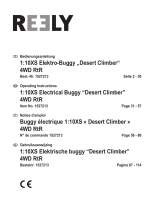 Reely 1527213 Mode d'emploi
Reely 1527213 Mode d'emploi
-
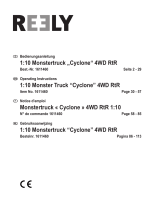 Reely 1611460 Mode d'emploi
Reely 1611460 Mode d'emploi
-
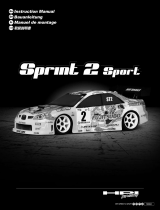 HDI Sprint 2 Sport Manuel utilisateur
HDI Sprint 2 Sport Manuel utilisateur
-
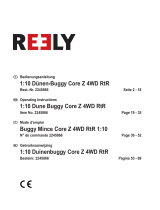 Reely 2245866 Mode d'emploi
Reely 2245866 Mode d'emploi
-
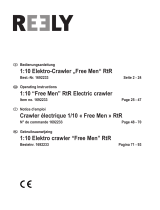 Reely 1692233 Mode d'emploi
Reely 1692233 Mode d'emploi
-
Reely 2245867 Mode d'emploi
-
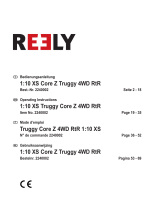 Reely 2240002 Mode d'emploi
Reely 2240002 Mode d'emploi





























